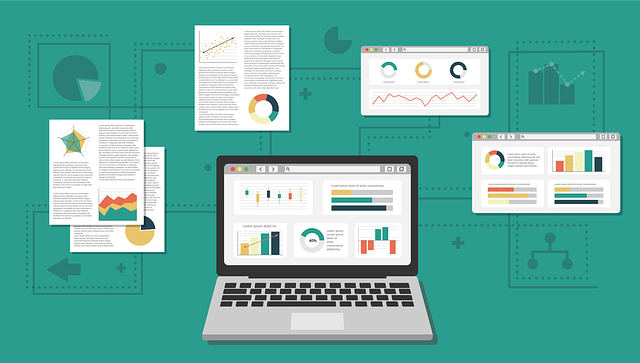Business intelligence (BI) is a collection of concepts, approaches, processes, structures, and technology that transform raw data into meaningful and valuable information for business purposes. BI refers to a collection of strategies that aid in identifying, locating, and examining the best data from a vast quantity of data. The main purpoe of BI is to enhance decision making.
Business intelligence can manage enormous volumes of data in order to assist find and evolve new business prospects. Taking advantage of these new chances and implementing a productive strategy can bring a comparable market benefit and long-term stability.
Early commercial programs had their own databases to serve their tasks, and organizations quickly recognized the analytical utility of the data to which they had access. These organizations identified that by automating more systems, more data would become available. However, due to system incompatibilities at that time, gathering this data for analysis proved difficult. As a result, an infrastructure for data interchange, gathering, and analysis that could provide a unified picture of an enterprise’s data was necessary.
DATA WAREHOUSE IN BUSINESS INTELLIGENCE
The data warehouse is a stand-alone scheme that is the repository of all of the organization’s data. It is in a format that can be effectively analyzed so that substantial accounts may be created for administration and other department workers. Data warehouses are the backbone of data storage in business intelligence. The database of a data warehouse was intended to enable the analytical operations required for business intelligence.
Complex inquiries and data comparisons are used in business intelligence to inform everything from daily choices to organizational-wide shifts in emphasis. Typically, business intelligence applications are used in conjunction with business ERP applications. To know more about ERP System please read our Article – What is an ERP System ?
The following are important challenges of to make this happen.
- Data must be gathered from numerous systems. Some systems may be compatible, however some platforms may not be.
- The same piece of data may exist in databases of different systems of different sorts. A same data item may not only be represented in different forms, but its values may also be different in different databases.
- Data is always changing in an organization.
- The volume of data is enormous. As a result, it is not easy to analyze and display.
ETL (extract, transform, and load)
ETL is an acronym that stands for extract, transform, and load. An ETL tool in business intelligence extracts data from one or more data sources, transforms and purifies it to make it suitable for reporting and analysis, and puts it into a data store or data warehouse. The ERL’s primary function is to read data from one or more data sources. It can read data from practically any data source, including databases, flat files, RSS/ATOM feeds, Web services and even from spreadsheets. These programs, as the name implies, extract data from source databases, change/transform it into the widely used data warehouse format, then put it into the data warehouse.
Multiple data sources can be consolidated into a well-structured database for complicated analysis using the ETL function. The ETL process is carried out on a regular basis, such as daily, weekly, or monthly, depending on the demands of the organization.
REPORTING
A data-mining engine’s information is useless unless it is quickly and clearly communicated to those who want it. The digital dashboard is a popular method for showing information. But here are many formats for reporting information and knowledge results. It gives stakeholder with the input required to propel the firm forward. It shows the client a graphical representation of business operations. The user may then drill down into the data at any time to learn more about a certain procedure.
DATAMART
In business intelligence, a data mart is the access layer of a data warehouse. It is used to provide users with data. A data mart is a special type of a data warehouse. It is narrowly focused on a specific topic (or functional area), such as sales, finance, or marketing. Whereas data warehouses provide enterprise-wide depth, data marts only include information for a specific department. Constructing a data mart is less expensive than implementing a data warehouse, making it more suitable for small businesses.
Business Intelligence not only supports the most recent information technologies, but it also offers ready-to-use application solutions. It focuses on the access and distribution of corporate information to end users. it also serves as a resource for both information suppliers and information consumers. It allows access to all types of corporate information, not only those held in a data warehouse.
To know more about beneifts of ERP System please read our Article – What is the benefit of an ERP System?

